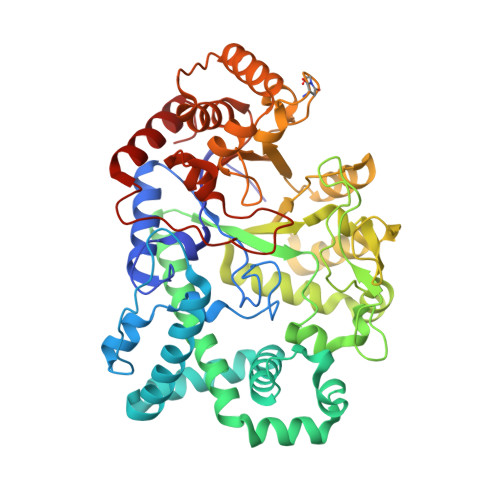Three-way stabilization of the covalent intermediate in amylomaltase, an alpha-amylase-like transglycosylase.
Barends, T.R., Bultema, J.B., Kaper, T., van der Maarel, M.J., Dijkhuizen, L., Dijkstra, B.W.(2007) J Biol Chem 282: 17242-17249
- PubMed: 17420245
- DOI: https://doi.org/10.1074/jbc.M701444200
- Primary Citation of Related Structures:
2OWC, 2OWW, 2OWX - PubMed Abstract:
Amylomaltases are glycosyl hydrolases belonging to glycoside hydrolase family 77 that are capable of the synthesis of large cyclic glucans and the disproportionation of oligosaccharides. Using protein crystallography, we have generated a flip book movie of the amylomaltase catalytic cycle in atomic detail. The structures include a covalent glycosyl enzyme intermediate and a covalent intermediate in complex with an analogue of a co-substrate and show how the structures of both enzyme and substrate respond to the changes required by the catalytic cycle as it proceeds. Notably, the catalytic nucleophile changes conformation dramatically during the reaction. Also, Gln-256 on the 250s loop is involved in orienting the substrate in the +1 site. The absence of a suitable base in the covalent intermediate structure explains the low hydrolysis activity.
Organizational Affiliation:
Laboratory of Biophysical Chemistry, University of Groningen, Nijenborgh 4, 9747 AG Groningen, The Netherlands.



















